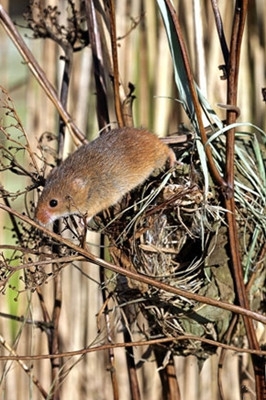科學(xué)技術(shù)
Animal testing
動物實驗
Be nice to mice
善待小鼠
and they may return the favour
或許它們會報以恩情
ONLY one drug of every ten successfully tested in laboratory animals ends up working in people.
在動物實驗中測試成功的藥物中僅僅有十分之一最終被用于人類。
One reason, of course, is that mice are not men.
其中一個原因顯然是老鼠與人有本質(zhì)的不同。

Another, though, might have to do with the fact that whereas human patients are afforded all manner of creature comforts, their animal proxies are not.
另一個原因則是人類患者會得到無微不至的照顧與舒適的環(huán)境,而被用于實驗的動物則不會。
Although medical science's favourite critters relish temperatures of a little over 30°C, laboratories routinely keep them at five or ten degrees below that.
藥物科學(xué)中飼養(yǎng)動物的最適溫度略高于30°C,然而,在實驗室中,它們所處的溫度通常比最適溫度低五到十?dāng)z氏度。
This is not in order to torture the beasts but, rather, because when kept warm they are unmanageably aggressive.
這樣做并不是有意虐待動物,而是因為在溫暖的環(huán)境中,動物具有不可控制的攻擊性。
The downside is that they have to eat more than they otherwise would, in order to keep their bodies warm.
降溫飼養(yǎng)的不足之處是動物為了保持體溫會吃掉比平常更多的食物。
That changes their physiology.
這樣會影響動物的生理機能,
And that in turn alters the way they metabolise drugs, with possibly confusing results.
從而改變它們對藥物的代謝情況,以至于產(chǎn)生令人困惑的實驗結(jié)果。
Joseph Garner, of Stanford University, thinks the answer is to keep the labs cool,
斯坦福大學(xué)的約瑟夫加納認為解決這個問題的辦法是保持實驗室里較低的溫度,
but let mice cope with the low temperatures as they do in their natural habitat: not by eating more but by building nests.
但是讓小鼠的自然習(xí)性—筑建巢穴,而非吃更多的食物—來應(yīng)對低溫。
So far, though, no one has a clear idea of how much nesting material is needed to keep mice happy.
可是到目前為止,人們還不能確定提供多少筑巢材料才能使小鼠保持良好的狀態(tài)。
Dr Garner and his colleagues therefore decided to find out.
然而,加納博士和他的同事決心找出答案,
They have just reported their results in the Public Library of Science.
不久前他們將實驗結(jié)果發(fā)表在《公共科學(xué)圖書館》雜志上。
Dr Garner and his team let each of their mice, 36 males and as many females from three strains commonly used in trials, roam free in two cages connected by a narrow tube.
加納博士和他的團隊將36只雄鼠與同等數(shù)量的雌鼠置于由一條細管道連接的兩只籠子里,并讓它們自由活動,這些小鼠來自臨床試驗中常用的三個種系。
One cage was kept constant at one of six temperatures between 20°C and 35°C.
其中一只籠子保持在20°C到35°C之間指定的六個溫度中的一個;
The other was maintained at 20°C but was stocked with up to ten grams of finely shredded paper, which the mice could use to weave a nest.
另一個則維持在20°C,但其中填入了10克經(jīng)精心加工過的碎紙屑。
The idea was to check whether the animals would rather build a nest in the cooler cage or move to the warmer one, possibly tugging nesting material along with them strand by strand.
此舉是為了觀察這些小動物會在較冷籠子里建一個巢穴,還是會通過管道爬至較暖和的籠子中,甚至還可能不辭辛苦地將這些筑巢材料一點一點地帶過去。
The researchers found that the rodents' preferences varied slightly between strains, as well as between sexes, confirming that there is no single set of conditions in which all mice feel cosy.
研究人員發(fā)現(xiàn)這些嚙齒動物的喜好隨著種系和性別的不同而有輕微的改變。此項結(jié)果表明,并沒有單一的一套環(huán)境條件能讓所有的小鼠感到舒適。
In general, though, with little nesting material around, the animals laboriously carried strands of paper over to the warmer spot, one or two at a time.
不過通常情況下,在周圍沒有筑巢材料時,小鼠們會勤勞地將紙屑一點一點地運到更暖和的籠子里,
But leave at least six grams of paper in the chilly cage, and many mice will prefer instead to brave the cold and build a nest there.
但會在較冷籠子里留下至少6克的紙屑。而且許多小鼠會勇于面對寒冷,并在那里筑起自己的家。
That seems a small price to pay for better drug trials.
如此情況下,為了更好的進行藥物試驗,這已算是極小的代價了。



